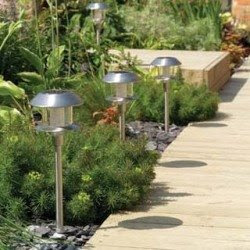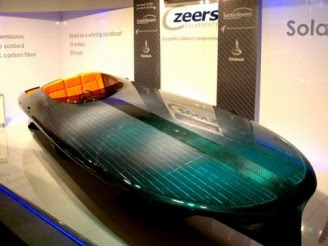 |
The basic PV or solar cell typically produces only a small amount of power. To produce more power, solar cells can be connected in series to make a PV module (a.k.a. PV panel, solar electric panel). Solar cells or more photovoltaic modules form a PV array. The amount of power solar panels produce is determined by the quality of the solar panel, solar cells and technology used in making the solar panel.
Conventional PV solar panels made from silicon wafers (monocrystalline silicon) convert about 17 to 20 percent of sunlight into usable electricity. The latest solar panels that utilize the new cell can convert into electricity 22 percent of the sunlight they collect. Polycrystalline panels efficiency typically range from 15% to 17%.
Typically, PV panels are mounted on a roof or are integrated in the roof so they act as both a part of the roof or shingles, and a solar panel at the same time. PV can also be incorporated as building facades and canopies. Integrated PV systems are usually installed during construction of the building. The amount of power that a PV panel will deliver is proportional to the amount of sunlight that falls upon it. Ideally PV panels are best placed so that they face south (±450). Photovoltaic panels, however, suffer from decreased power output when they heat up, so high temperatures decrease their efficiency.
When the PV panel is tied to a power grid, the DC (direct current) is converted to alternating current (AC) at grid rating by an inverter. Grid connect PV systems are often integrated into buildings. If you generate more power than you consume, the meter spins backward, as that surplus electricity flows back into the grid for others to use. By returning surplus electricity to the grid, no battery is needed. Some power companies will compensate surplus at a rate that is different than the cost of consumption.
A basic off-grid PV system consists of a solar panel, which generates DC power, a battery bank that stores the DC power, and an inverter (if AC power is required). Modern PV systems are also equipped with some kind of electronic charge controller. The main job of the charge controller is to prevent the battery from being overcharged and also from deep discharging of the battery. The charge controller also protects the solar panels from electrical damage.
The working life of a solar panel is approximately 20 to 25 years and once purchased they continue to produce electrical power for many years. Virtually, they require little or no maintenance, but dust or grime on the front of solar panels will substantially reduce the output, so they should be cleaned periodically.





